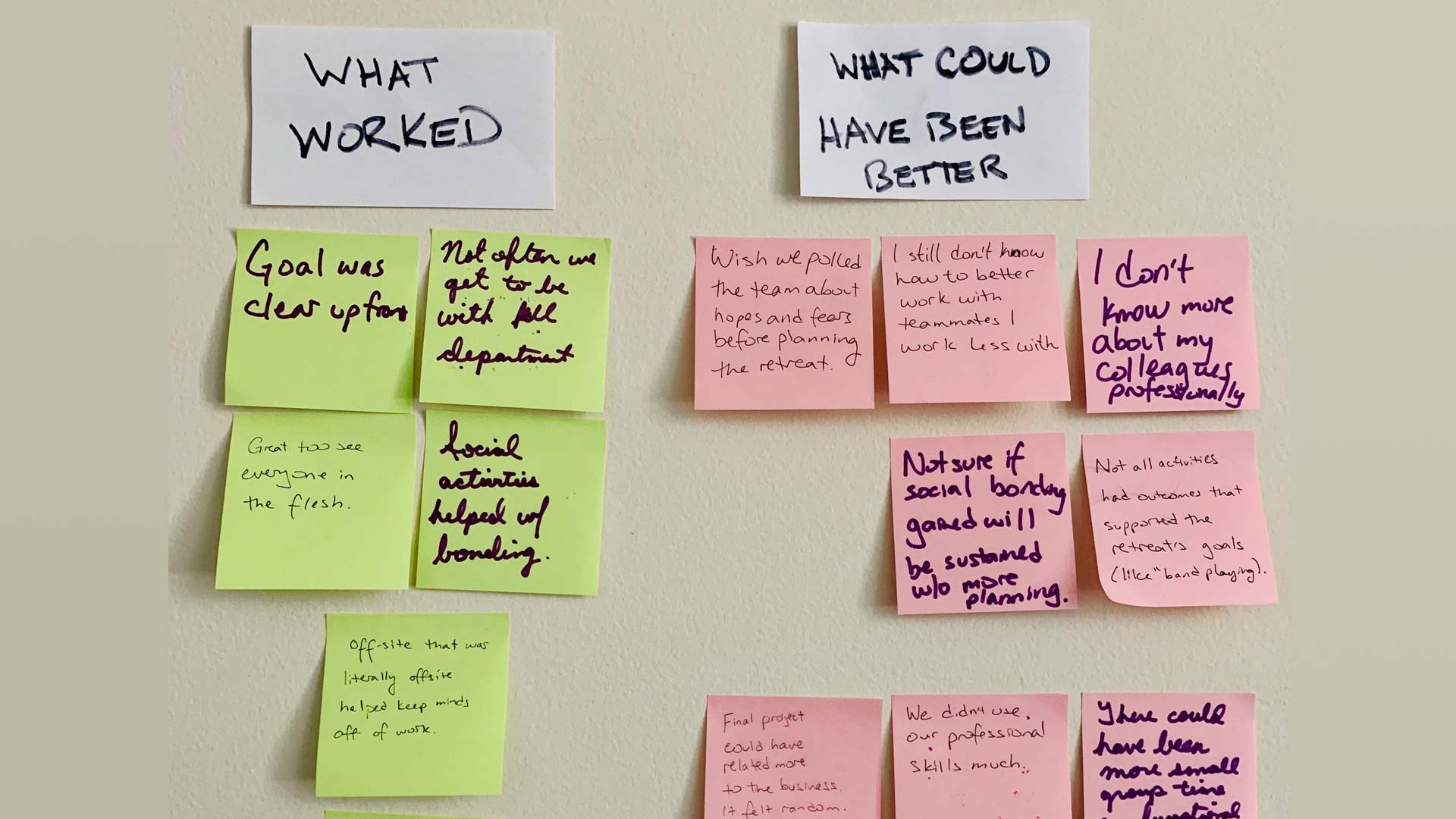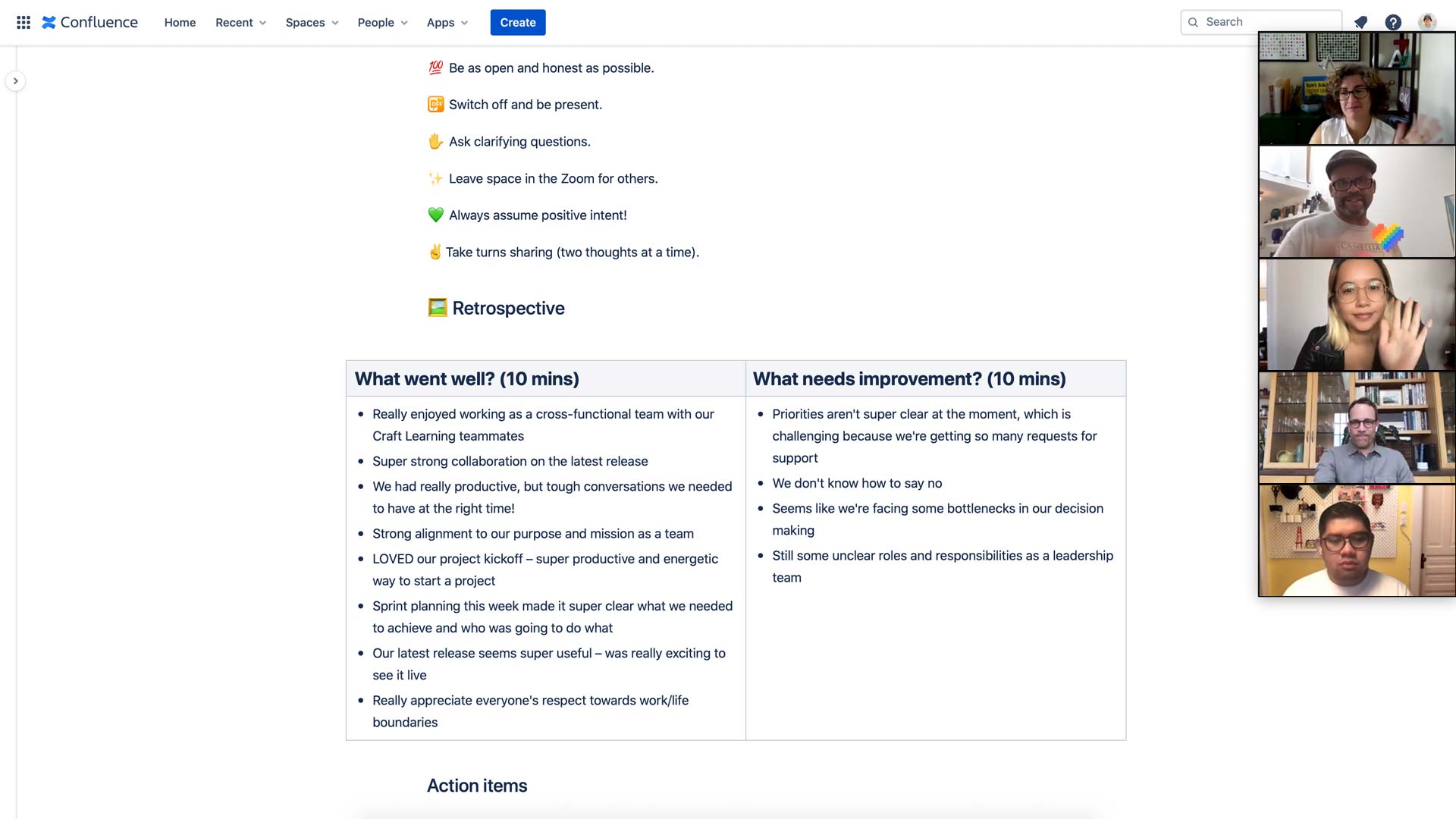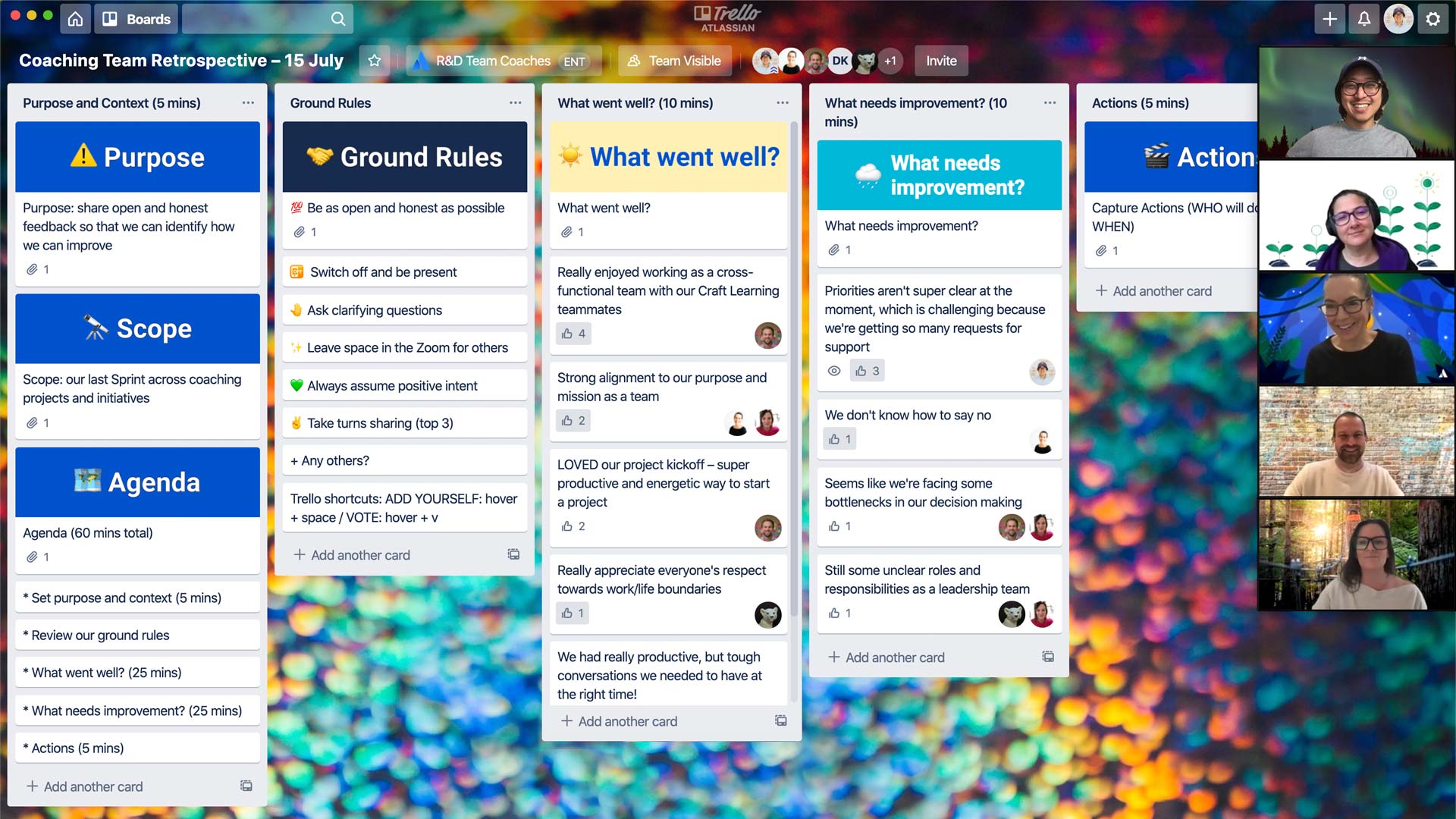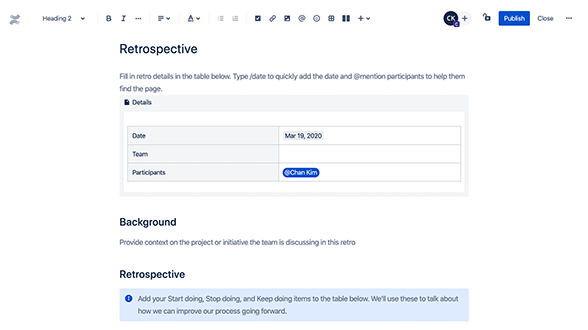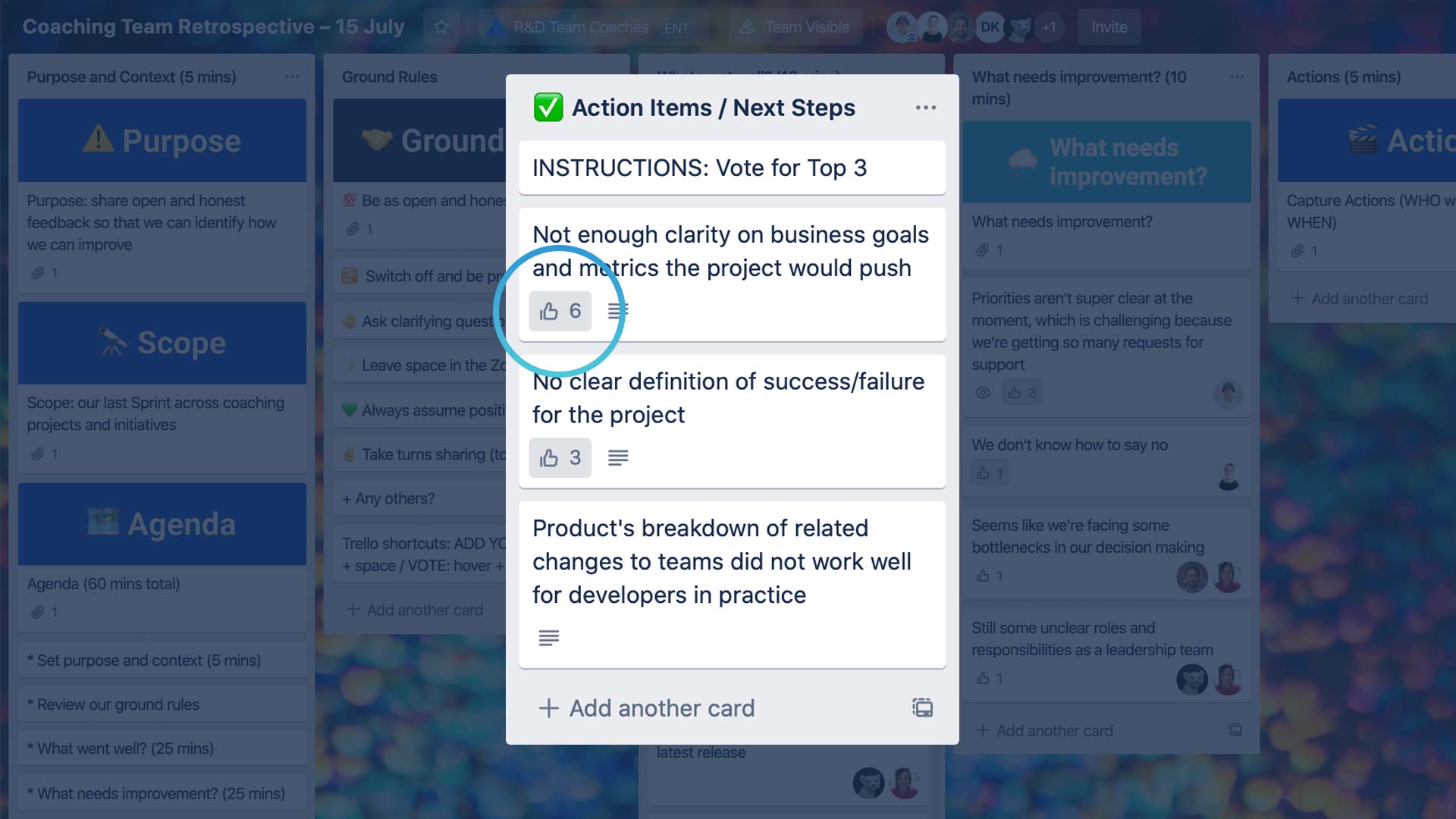Sprint retrospectives
Een Sprint Retrospective geeft je de mogelijkheid om je laatste sprint te bekijken en verbeteringen aan te brengen voor toekomstige sprints. Deze vergaderingen zijn essentieel omdat het regelmatig evalueren en verbeteren van processen leidt tot betere kwaliteitsresultaten en minder obstakels.
In deze handleiding bespreken we wat een Sprint Retrospective is, waarom het belangrijk is en hoe je succesvolle sprintreviews kunt uitvoeren om je team effectiever te maken.
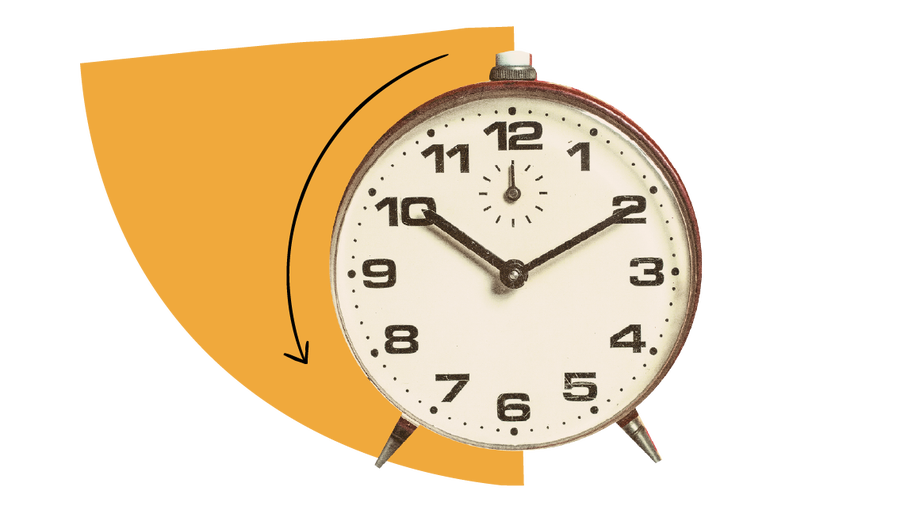
Voorbereidingstijd
15 m
LOOPTIJD
60 m
Personen
4-8
SAMENVATTING VAN 5 SECONDEN
- Benadruk wat er goed ging tijdens de laatste sprint.
- Bespreek wat er niet zo goed ging of wat er beter had gekund.
- Bepaal hoe je verbeteringen kunt aanbrengen in de volgende sprint.
- Gebruik AI om inzichten samen te vatten, conclusies te genereren en het eenvoudiger te maken om er actie op te ondernemen.
WAT JE NODIG HEBT
- Vergaderruimte of videoconferentie waarbij je je scherm kunt delen.
- Digitale samenwerkingstools (zie sjablonen).
- Optioneel: fysiek whiteboard, markers, plakbriefjes en een timer.
Zo voer je een sprint retrospective uit
Kijk naar eerdere sprints om verbeteringen aan te brengen voor toekomstige sprints.
Wat is een Sprint Retrospective?
Een Sprint Retrospective is een evaluatie die wordt uitgevoerd na een sprint en die een belangrijke rol speelt in de Agile methodologie. Een Sprint Retrospective is bedoeld om vast te stellen wat er goed ging, waar je problemen had en om gebieden te identificeren waar je kunt verbeteren.
Regelmatige evaluaties zijn een essentieel onderdeel van de samenwerking binnen een team. Door te begrijpen wat werkt en wat niet, kun je Agile processen verbeteren om je volgende sprint te vereenvoudigen.
En omdat AI je helpt om documentatie van de sprint te vinden, conclusies samen te vatten en bruikbare stappen te genereren, zijn sprintretro's nog waardevoller.
Wie moet een Sprint Retrospective-vergaderingen bijwonen?
Je Sprint Retrospective-vergaderingen moet bestaan uit de producteigenaar, het Scrum-team, de Scrummaster, belanghebbenden en Rovo.
Tijdens een Sprint Retrospective-vergadering is het goed om verschillende perspectieven in de ruimte te hebben. Iedereen kan samenwerken om je laatste sprint te analyseren en te bepalen welke wijzigingen je moet aanbrengen voordat je aan het volgende deel van je project gaat beginnen.
Hoe vaak moet je sprint retrospectives uitvoeren?
Retrospectives zijn het meest effectief als ze aan het einde van elke sprint worden uitgevoerd. Als je sprints echter van korte duur zijn (bijvoorbeeld een week), is het misschien logischer om een retrospective uit te voeren nadat een aantal sprints zijn voltooid, in plaats van na elke sprint.
Hoe lang moet een sprint retrospective duren?
De duur van je sprint retrospective kan variëren, afhankelijk van de duur van de sprint. Een sprint retrospective kan slechts 45 minuten duren, maar ook bijvoorbeeld 3 uur. Geef je team genoeg tijd en ruimte voor een zinvol gesprek. Als je vooraf een beetje extra tijd neemt, kun je tijd besparen en de resultaten op de lange termijn verbeteren.
Wat zijn de belangrijkste voordelen van een sprint retrospective?
Sprint retrospectives helpen je team om van het verleden te leren en te verbeteren in de toekomst, wat leidt tot vereenvoudigde Scrum-sprints en een beter eindresultaat.
Uit onderzoek blijkt dat de belangrijkste voordelen van retrospectives zijn dat ze teams helpen om:
- Voortdurende verbetering te bereiken
Het is van cruciaal belang om een actieplan op te stellen en dit op te volgen tijdens toekomstige vergaderingen om te kunnen groeien. - Teamreflexiviteit te verbeteren
Reflexiviteit is 'de mate waarin teamleden collectief nadenken over de doelstellingen, strategieën en processen van het team en deze toepassen onder de huidige of verwachte omstandigheden.'
Teams met een hogere mate van reflexiviteit zijn waarschijnlijk beter in het innoveren en het identificeren van problemen en kansen, het aanpassen aan veranderingen en het effectief implementeren van nieuwe ideeën.
Hogere reflexiviteit zorgt voor:
- Betere besluitvorming
- Betere probleemoplossing
- Effectievere uitvoering van strategieën
- Meer leerervaringen als team
- Meer innovatie
-
Beter aanpassingsvermogen
Uit andere onderzoeken is gebleken dat reflexiviteit teams helpt om:
- Informatie nauwkeuriger te verwerken
- Het aantal fouten te verminderen
- Meer agile en flexibeler te zijn tijdens veranderingen
Ideeën voor Sprint Retrospectives
Sprint Retrospectives lijken op het eerste gezicht misschien overweldigend, maar ze zijn vrij eenvoudig. Je kunt een Sprint Retrospective-sjabloon gebruiken of de vijf stappen volgen die in deze handleiding worden vermeld. Zolang je feedback verzamelt en die gebruikt om inzichten te genereren en veranderingen door te voeren, doe je het goed.
Elke Sprint Retrospective begint met een succesvolle Sprint. Jira biedt verschillende belangrijke functies die je kunnen helpen bij het organiseren van succesvolle sprints, waaronder:
- Backlogs: Met backlogs kun je een lijst maken van al het werk dat verband houdt met een project of initiatief. Je kunt dit werk opsplitsen in afzonderlijke sprints, die meestal 2 weken duren.
- Borden: Met Jira-borden kun je je grote project opdelen in beter beheersbare onderdelen, zodat je je sprints kunt plannen en ervoor kunt zorgen dat je producten sneller worden verzonden.
- Tijdlijnen: Tijdlijnen houden je team afgestemd met belanghebbenden en bieden een overzicht van de projecttijdlijn met in kaart gebrachte werkitems, afhankelijkheden en releases.
Jira maakt het eenvoudig voor agile-teams om sprints te visualiseren, bij te houden en te beheren. Met Jira kun je je volgende sprint vereenvoudigen om te zorgen voor tijdige resultaten. Probeer Jira-scrumborden en kijk hoe Jira je kan helpen je agile-team te optimaliseren.
Veelgestelde vragen over sprint retrospectives
1. Zet de toon
Geschatte tijd: 5 MIN.
Retrospectives maken deel uit van het proces voor sprintplanning. Het doel is om feedback en verschillende perspectieven te verzamelen om processen en resultaten te verbeteren. Gebruik een van onze kant-en-klare sjablonen om het proces eenvoudiger te maken.
Moedig teamleden aan het begin van de vergadering aan om tijdens de sessie op respectvolle wijze openlijk hun gedachten te delen, waarbij je je concentreert op het aanbrengen van verbetering in plaats van het uiten van verwijten. (Dit is van essentieel belang voor de ontwikkeling van psychologische veiligheid en een cultuur zonder verwijten.) Voeg Loom AI toe aan je vergadering om notities te maken, zodat je team zich kan concentreren op de retro zelf.
Tot slot, moedig je team aan om met Rovo te praten als gesprekspartner als ze zich zorgen maken over de toon of het sturen van feedback.
Tip: creëer een veilige ruimte
Geef duidelijk aan wat er gebeurt met de informatie die tijdens de retrospective is besproken. Blijft de informatie binnen de groep? Delen jullie die met het management? Overweeg om de Chatham House Rule te gebruiken zodat teamleden zich veilig en op hun gemak voelen.
3. Verzamel feedback
Geschatte tijd: 15 minuten
Als je eenmaal de toon hebt gezet en de verwachtingen voor de vergadering hebt bepaald, kun je feedback van teamleden verzamelen over hoe de laatste sprint is verlopen. Er zijn verschillende manieren om dit te doen, waaronder door:
- 💬 Een open groepsdiscussie te houden over wat goed ging en wat niet
- 🗒️ Enquêtes (anoniem of toegewezen)
- ❤️ Een 4 Ls retrospective: bespreek wat iedereen geweldig of vreselijk vond, heeft geleerd en wat iedereen graag wilde tijdens de laatste sprint
- 🙂 De SMG-methode (Sad, Mad, Glad): bespreek waarom teamleden deze emoties voelden. Wat zorgde er voor teleurstelling? Frustratie? Wat was er leuk en bemoedigend?
- Gebruik Rovo-zoeken om relevante pagina's of tickets te verzamelen om de feedback in context te plaatsen.
Tip: zorg ervoor dat teamleden hun meningen delen
Een van de grootste problemen die kunnen voorkomen tijdens een sprint retrospective is wanneer teamleden niet genoeg feedback geven. Probeer een veilige ruimte te creëren en het gesprek te begeleiden met behulp van een eenvoudige structuur, zoals de 4 Ls- of SMG-methode. Je kunt ook proberen anonieme inzendingen te verzamelen.
Als een bepaalde persoon voornamelijk de leiding neemt in een gesprek, moet je ervoor zorgen dat anderen ook hun stem kunnen laten horen.
3. Zet feedback om in inzichten
Geschatte tijd: 20 MIN.
Zoek als groep naar patronen en trends in de feedback. Wat hebben we geleerd? Welke veranderingen kunnen we aanbrengen om voort te bouwen op de goede aspecten en de slechte elementen zoveel mogelijk te beperken of te vermijden? Deze inzichten zijn van essentieel belang voor het stellen van doelen en het mogelijk maken van verbeteringen, dus moedig iedereen aan om bij te dragen.
Tip: wees een trendspotter
Sprint retrospectives gaan over het verbeteren van je volgende sprint, dus concentreer je meer op patronen en trends dan op eenmalige goede aspecten of fouten.
Tip: neem Rovo op in de groep
Gebruik Rovo Chat om feedback te distilleren in de belangrijkste patronen en trends.
Stap 4: Maak actie-items
Geschatte tijd: 15 min.
Nu is het tijd om inzichten om te zetten in actie. Nu kun je beginnen met het stellen van doelen en bepalen welke veranderingen je moet aanbrengen voor toekomstige sprints.
Als je veranderingen en actie-items documenteert, moet je ervoor zorgen dat je de eigenaren en deadlines toewijst om het proces te starten.
Tip: voeg actie-items toe aan je takenlijst
In plaats van actie-items op een plaknotitie te schrijven of in een digitaal document vast te leggen, voer je ze rechtstreeks in je sprintplanning - of projectbeheersysteem in, zoals Jira of Trello. Zo zorg je ervoor dat ze direct worden opgenomen in je plannen.
Als de actie-items corresponderende tickets of issues hebben, voeg je die links toe aan de pagina met retrospectives en/of taken zodat je de status gemakkelijk kunt zien.
Tip: gebruik AI Chat
Zet feedback, patronen en inzichten om in bruikbare vervolgstappen met AI Chat.
5. Conclusie
Geschatte tijd: 5 minuten
Sluit je sprint retrospective af door iedereen te bedanken voor hun bijdragen en door een samenvatting te delen van de belangrijkste elementen en actie-items. Op naar de volgende sprint!
Variaties
Zorg ervoor dat je retrospectives up-to-date zijn en aan alle eisen voldoen. Laat oefeningen weg die geen specifiek doel hebben. Er zijn verschillende manieren om een gesprek aan te moedigen, dus experimenteer en kijk welke manier het beste werkt voor jouw groep. Hier zijn negen van onze favoriete oefeningen voor sprint retrospectives.

Heb je nog vragen?
Praat met andere teamdraaiboekgebruikers van Atlassian, krijg antwoord op je vragen of geef feedback.
Andere spellen die je misschien leuk vindt
Vergaderingen
Wekelijkse teamupdates
Deel hoe het ervoor staat zonder weer een vergadering te plannen.
Vergaderingen
Vergaderingen op basis van pagina's
Betere vergaderingen beginnen met een pagina waarop het doel, de verwachte resultaten en de belangrijkste discussiepunten worden beschreven.
Communicatie
Gebruikershandleiding
Vertel je teamgenoten hoe ze het beste met je kunnen samenwerken.
Cultuur
Team-gezondheidsmonitor
Evalueer de gezondheid van je team en stel een verbeteringsplan op.
Blijf up-to-date
Ontvang het laatste advies over spellen en werk als je je inschrijft voor onze nieuwsbrief.







